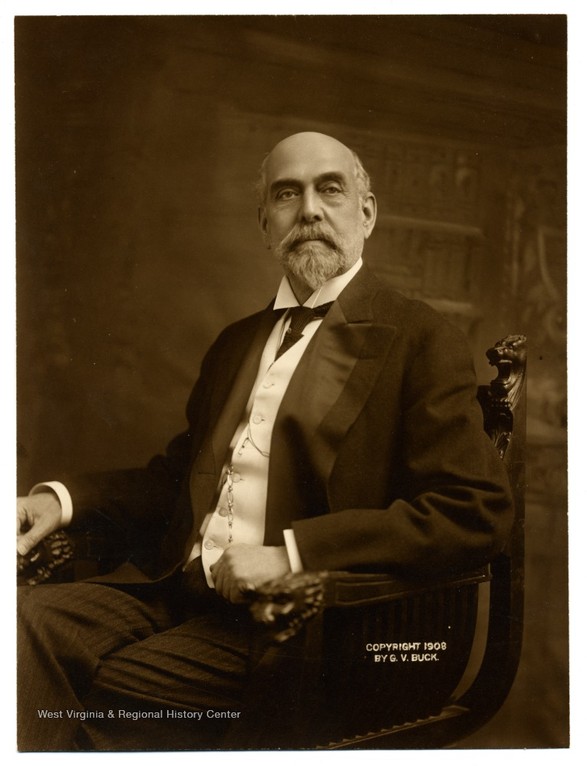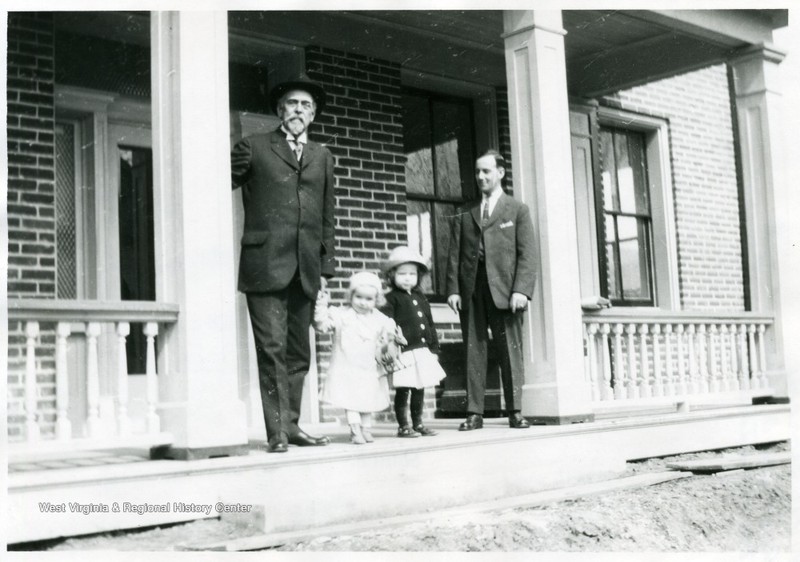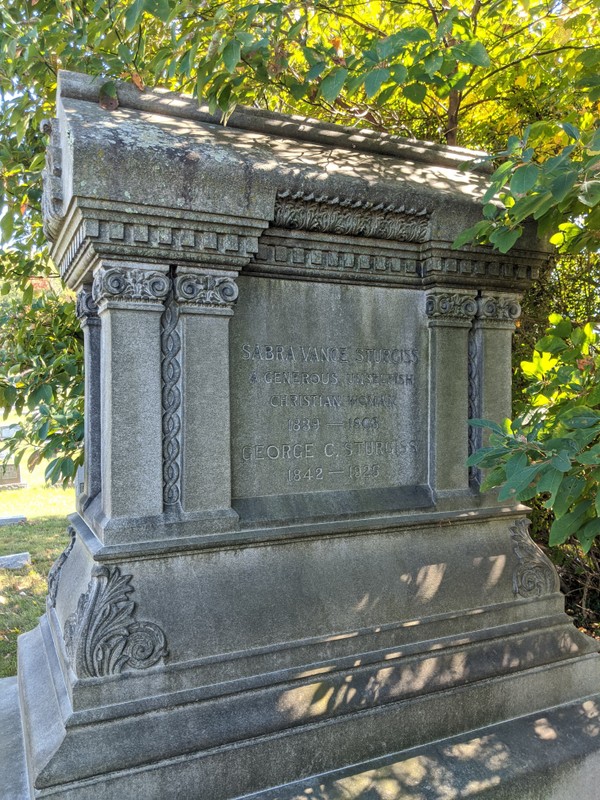George C. Sturgiss (1842-1925)
Introduction
Text-to-speech Audio
George C. Sturgiss was a West Virginia House of Delegates Member, congressional representative, and lawyer. Sturgiss made a variety of political and personal contributions to West Virginia and Morgantown. He worked tirelessly to advance commerce in Morgantown through the creation of transportation infrastructure. Additionally, his position as secretary for the West Virginia University Board of Regents helped advance educational opportunity in the Mountain State. Sturgiss was also well-known and respected in the Morgantown community for his philanthropic contributions to the local area.
Images
Portrait of George C. Sturgiss, 1908.

Photo taken by George's wife Charlotte Kent Sturgiss. Left to right: George, Roberta, Marie, and his nephew Gilmour Sturgiss.

Sturgiss' grave.

Backstory and Context
Text-to-speech Audio
George C. Sturgiss was born in 1842 in Poland, Ohio. At the age of seventeen, he moved to Morgantown and attended Monongalia Academy. After two years at the academy, Sturgiss began studying law with Waitman T. Willey, a United States senator for West Virginia who is also buried in Oak Grove Cemetery. By 1863, Sturgiss was admitted to the bar and began practicing law in Morgantown. This same year he married Sabra J. Vance. After Sabra's death Sturgiss married Charlotte Cecilia Kent in 1908. The couple had four daughters: Katherine Kent, Helen Marie, Sabra Roberta Cecilia and Elizabeth Arabella.
During the Civil War, the newly licensed lawyer served as a clerk under Major James V. Boughner, paymaster of the United States Volunteers. Sturgiss’ political career began when he was elected Superintendent of Free Schools in Monongalia County. He filled this role until 1869, when he ran for West Virginia House of Delegates. Sturgiss won his race and served as a representative from 1870 until 1872.
After his stint in the West Virginia House of Delegates, Sturgiss alternated between political positions and law practice, which he operated in partnership with Ralph L. Berkshire, also buried in Oak Grove Cemetery. From 1872 until 1880, Sturgiss served as prosecuting attorney of Monongalia County. In 1880, he became the Republican nominee for governor of West Virginia, though he lost the race to Jacob B. Jackson. Following this defeat, Sturgiss returned to practicing law until 1889, when President Benjamin Harrison appointed the lawyer as United States Attorney for the District of West Virginia. Sturgiss held this position for four years. Another one of Sturgiss' political campaigns occurred in 1906 – this time for United States House of Representatives. Sturgiss was successful in this campaign and his subsequent one, which allowed him to serve terms in the Sixtieth and Sixty-First Congress. After his time in Congress, Sturgiss became a circuit court judge from 1912-1920.
George C. Sturgiss is also significant for his non-political contributions. He used the wealth he had acquired from his law practices to personally finance the West Virginia Northern Railroad and the Morgantown & Kingwood Railroad, both of which significantly advanced access to and from Morgantown. Additionally, Sturgiss modernized utilities in Morgantown through his role as director of the Union Utility Company. Sturgiss’ interest in improving educational opportunities is evident. He served as secretary of the Board of Regents for West Virginia University for twelve years. It is thanks to his contracts that the university acquired many of its early buildings such as the library, farm, and Armory and Mechanical Hall. Sturgiss was also chairman of the board of trustees for the Methodist Episcopal Church (now Wesley United Methodist Church) and donated a pipe organ and 7,500-pound chime of bells for a new church building.
In 1890, former West Virginia governor George W. Atkinson wrote the following about Sturgiss: “The writer… remembers him as a young man of high personal character, attentive to his duties and very able in discharge of them. He was beyond question one of the most formidable and forceful members of [the West Virginia House of Delegates].”1 Sturgiss died in Morgantown in 1925 from pulmonary tuberculosis. However, he left an indelible mark on Morgantown through his political, educational, and religious contributions.
Sources
1. Men of West Virginia, Volume II. Chicago, IL. Biographical Publishing Company, 1903.
"Old Bell Removed." Daily New Dominion (Morgantown) July 23rd 1904. , 1-1.
STURGISS, George Cookman, Biographical Directory of the United States Congress 1774 - Present. Accessed September 10th 2020. https://bioguideretro.congress.gov/Home/MemberDetails?memIndex=S001049.
V. G. Buck. West Virginia & Regional History Center. Accessed September 10, 2020. https://wvhistoryonview.org/catalog/030091.
Sabra J. Sturgiss. West Virginia & Regional History Center. Accessed September 10, 2020. https://wvhistoryonview.org/catalog/010415.
Iain MacKay. 2020.
